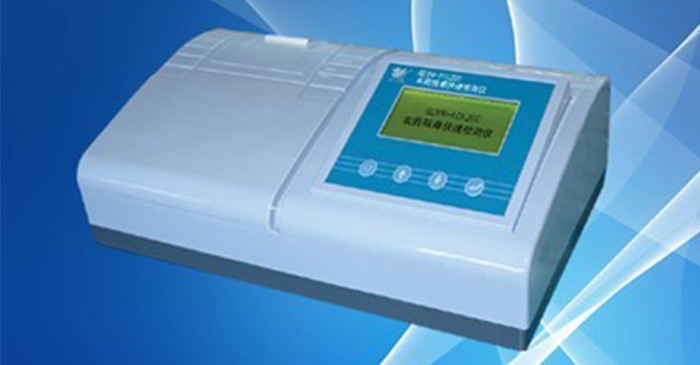 | (National Service Hotline) 400-024-3398 |
National customer service telephone number: 400-024-3398
Contact: Ms. Wu
Mobile phone: 15940520719 13804901037
Tel:
024 - 22526091
024 - 22515162
024 - 22515165
Fax: 024 - 22524338
E-mail: 13804901037@139.com
Address: No. A, No. 51 Youth Street, Shenhe District, Shenyang, Liaoning.
Address: 2 floor, block A, Changbai Electronics Industrial Park, 10-5 Chong Shan West Road, Huanggu District, Shenyang, Liaoning.
Website: www.syhgjm.com
A quantitative analysis method based on the property that the ground state atoms dispersed into vapor state can absorb the characteristic light radiated by the same atom.
G. R. Kirchhoff in 1860 confirmed that light from a sodium vapor passes through a sodium vapor at a lower temperature than that vapor, causing absorption of sodium emission lines. Further studies have also found that the wavelength of dark lines in solar radiation is exactly the same as the characteristic spectral lines emitted by certain elements, indicating that the dark lines observed by J. Fraunhofer in the solar spectrum are the result of the absorption of solar radiation by cryogenic homologous atoms around it. This is the earliest concept of atomic absorption spectroscopy. In 1902, R. Woodson first measured mercury in the air using the phenomenon that mercury vapor could absorb 2537 A spectral lines emitted by mercury arc lamps. Later, the phenomenon of atomic absorption was gradually applied to the study of chemical components in the atmosphere. Until 1955, Australian physicist A. Walsh designed and manufactured a simple instrument, using the principle of atomic absorption spectrometry for the analysis of various trace metal elements was successful, he was recognized as the founder of atomic absorption spectrometry.
In the early 1950s, the development of high quality closed hollow cathode lamp has greatly promoted the establishment of atomic absorption spectrometry. Until now, hollow cathode lamp is still the most widely used light source. This is a special gas discharge tube using abnormal glow discharge. It is usually made of suction metal titanium and tantalum as anodes. The hollow cylindrical cathode is made of metal materials containing elements to be measured. The modulated voltage is applied between the two electrodes to keep the glow discharge in the cathode cavity. The atoms sputtered from the cathode material and other particles are charged. The incoming inert gas atoms or ions collide with stimulated luminescence. Such conditions can radiate strong enough, pure, sharp and stable characteristic lines. Although microwave-excited electrodeless discharge lamps have been developed in recent years, they are limited to a few elements with high vapor pressure of halides.
In order to transform the analysis sample into the corresponding atomic vapor, special atomization devices must be provided. At present, there are two ways of flame atomization and electrothermal atomization. The former sprays the sample solution with the carrier gas into a high temperature chemical flame burner and atomizes the sample at the high temperature of the flame; the latter uses an electric heating furnace, tube, wire or flake atomizer made of different materials (such as graphite, tungsten, tantalum, quartz, etc.) to heat the sample in the atomizer for evaporation and atomization. Flame atomization has the advantages of simple operation, rapid operation and wide application range. The disadvantage is that the sample is diluted by carrier gas and gas, so the efficiency is low, the flame chemical interference and the sample consumption is large. In 1959, Soviet physicist Livov first applied the principle of graphite furnace evaporation in atomic emission spectrometry (AES) to atomic absorption spectrometry (AAS), and initiated non-flame atomization. In the following decade, various types of electrothermal atomization devices emerged, of which graphite furnace was one of the earliest developed.
Atomic absorption spectrometry (AAS) is based on the absorption of the characteristic radiation of the light source by the ground state atoms which exist stably under the experimental conditions, and the influence of the external conditions on it is small. Compared with atomic emission spectrometry, this method has higher accuracy, better selectivity and higher sensitivity to some elements. This method is applicable not only to trace elements in various samples.

Atomic absorption spectrometer accessories
